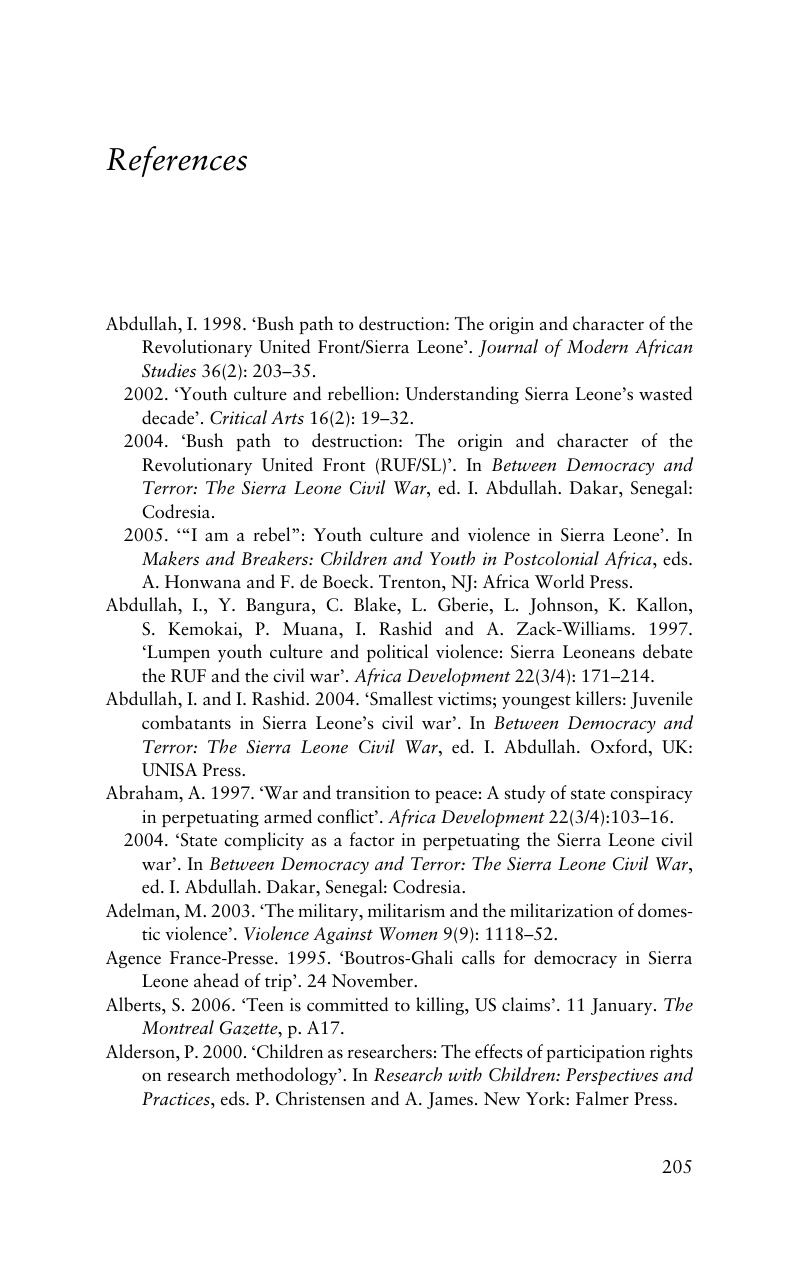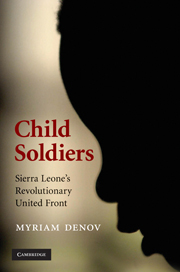Book contents
- Frontmatter
- Contents
- Acknowledgements
- Map
- Introduction: Child soldiers, iconography and the (il)logic of extremes
- 1 Children's involvement in war: The quandary of structure and agency
- 2 Recipe for rebellion: Civil war in Sierra Leone
- 3 Negotiating power: Research on and by child soldiers
- 4 ‘Becoming RUF’: The making of a child soldier
- 5 ‘Being RUF’: Victimization, participation and resistance
- 6 ‘Put dey gon don’: The unmaking of a child soldier
- 7 New battlefields
- References
- Index
- References
References
Published online by Cambridge University Press: 04 May 2010
- Frontmatter
- Contents
- Acknowledgements
- Map
- Introduction: Child soldiers, iconography and the (il)logic of extremes
- 1 Children's involvement in war: The quandary of structure and agency
- 2 Recipe for rebellion: Civil war in Sierra Leone
- 3 Negotiating power: Research on and by child soldiers
- 4 ‘Becoming RUF’: The making of a child soldier
- 5 ‘Being RUF’: Victimization, participation and resistance
- 6 ‘Put dey gon don’: The unmaking of a child soldier
- 7 New battlefields
- References
- Index
- References
Summary

- Type
- Chapter
- Information
- Child SoldiersSierra Leone's Revolutionary United Front, pp. 205 - 225Publisher: Cambridge University PressPrint publication year: 2010



